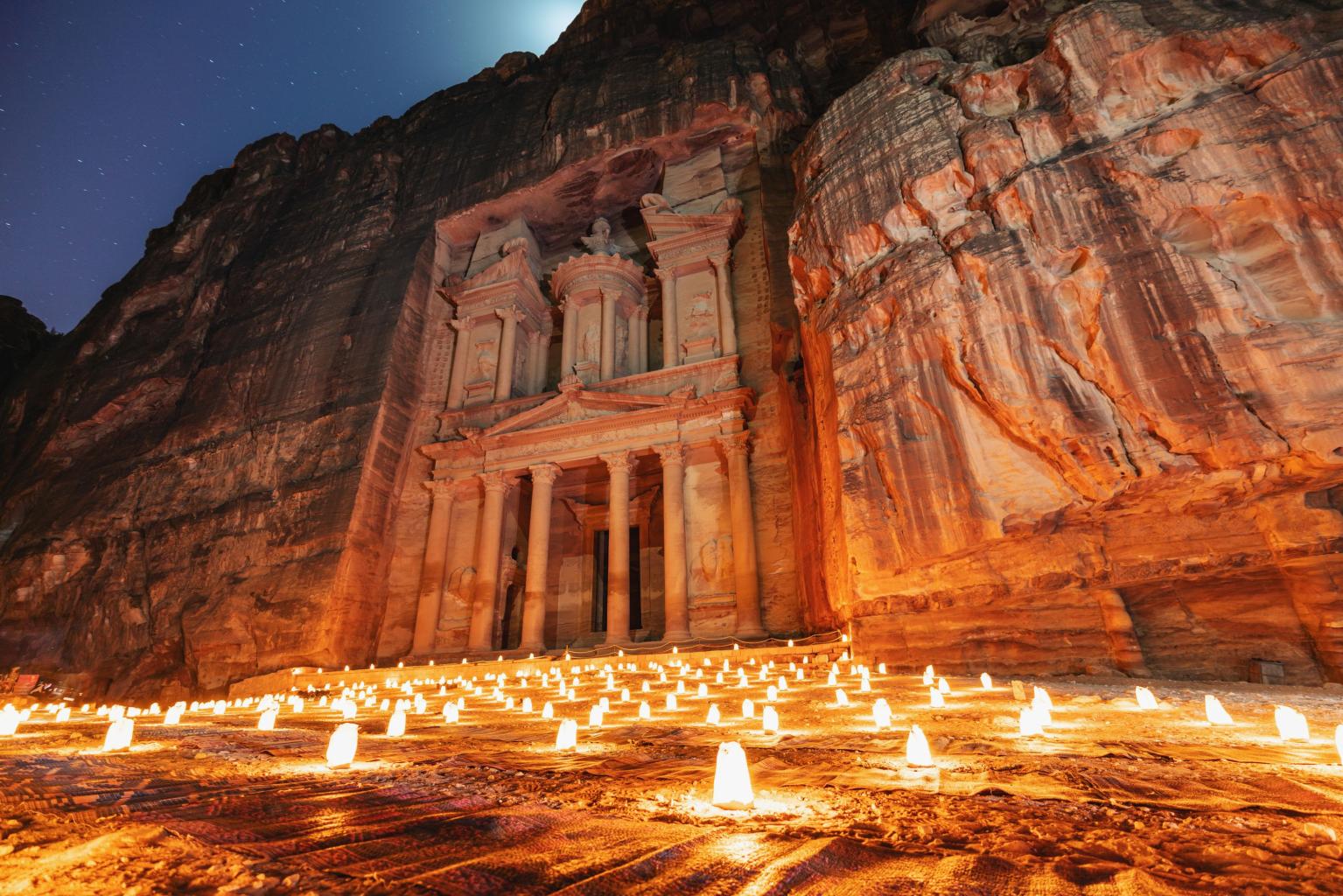Historic Peru – Journey Through the Inca Empire
Peru is a land of cultural contrasts and incredible landscapes. This historic destination is full of pre-Columbian heritage that tells the story of ancient civilizations, particularly that of the Incas. For history enthusiasts, the Sacred Valley region near Cuzco is ideal. This enchanting valley was the heart of the Inca Empire. In a 9-day journey, you will be transported through time, from the glorious Inca Empire to the colonial era, while discovering traditions that are still very much alive today.
Highlights of this historic journey:
- Exploration of ancient Inca ruins
- Visit to traditional villages where Quechua culture persists
- Celebration of colonial history in the cities of Cuzco and Ollantaytambo
- Discovery of spectacular monuments like Machu Picchu and Sacsayhuamán
1. Itinerary for a 9-day stay
Day 1: Arrival in Cuzco
City: Cuzco, the capital of the ancient Inca Empire, is perched at an altitude of 3,400 meters. Known as the historical center of Peru, Cuzco is a place where the past and present meet. Here, cobbled streets, colonial churches, and Inca temples create a unique atmosphere.
Activity 1: The historical center and Plaza de Armas
Begin your historical immersion in the heart of Cuzco by strolling through the Plaza de Armas. This square is surrounded by superb examples of colonial architecture, built on the foundations of Inca buildings.
- Why? A perfect introduction to the city's colonial past and the fusion between Spanish and Inca cultures.
- Practical info: Free access, walking tour. Wear comfortable shoes to fully enjoy the cobbled streets.
Activity 2: The Qoriqancha Temple
The Qoriqancha, or Temple of the Sun, was once one of the most important Inca temples before being transformed into a monastery by the Spanish. It offers a fascinating glimpse of Inca architectural prowess, ingeniously combining stone and earth.
- Why? You can clearly see the overlay of colonial architecture on Inca engineering.
- Practical info: Paid access (~15 USD). A guided tour is recommended to truly understand the details.
Where to sleep:
- Hotel Casona La Recoleta - A mid-range, rustic, and charming hotel. (50-80 USD/night).
- JW Marriott El Convento Cuzco - Luxurious hotel located in a former convent. (150-200 USD/night).
Where to eat:
- Chicha por Gastón Acurio – A restaurant that revisits traditional Peruvian dishes (20-30 USD/person).
- Jack’s Café – A relaxed place to enjoy simple international cuisine (10-15 USD/person).
Day 2: Sacsayhuamán and Q’enqo
Activity 1: Sacsayhuamán
Located on the heights of Cuzco, this imposing fortress was the scene of fierce battles between the Spanish and the Incas. The massive walls seem almost unreal as the stones are perfectly aligned.
- Why? It is one of the most impressive works of the Incas. Its grandeur is breathtaking.
- Practical info: Accessible on foot from Cuzco (~30 min), entrance costs about 18 USD. Bring water due to the altitude.
Activity 2: Q’enqo
Just 15 minutes by car from Sacsayhuamán, this mystical site was a ceremonial place for the Incas. Its intriguing underground galleries and carved stone altars are worth the visit.
- Why? Dive into the funerary and astrological practices of the Incas.
- Practical info: Included in the Sacsayhuamán ticket. Combine with the exploration of other nearby sites.
Where to sleep:
- Same hotels as Day 1 for more convenience.
Where to eat:
- Limo Cocina Peruana & Pisco Bar – Typical dishes with a Nikkei influence (15-25 USD/person).
- Pachapapa – Authentic Andean cuisine with a warm setting (10-20 USD/person).
Day 3: Pisac
City: Pisac is a charming town located 45 minutes by car from Cuzco, on the edge of the Sacred Valley. Known for its lively craft market, Pisac also houses some of the most imposing Inca ruins, overlooking the valley.
Activity 1: Visit the Pisac ruins
The agricultural terraces clinging to the mountains and the Pisac ruins offer a spectacular view of the Sacred Valley. These were used to protect Cuzco from invasions.
- Why? These ruins testify to the agricultural and defensive ingenuity of the Incas.
- Practical info: Allow about 2-3 hours for exploration. Tourist pass for entry to several sites (55 USD for 10 days). Bring light hiking shoes.
Activity 2: Pisac craft market
After exploring the ruins, head down to the colorful Pisac market where you will find many local artisans offering textiles, pottery, and other traditional items.
- Why? It is one of the most beautiful markets in Peru, perfect for discovering local crafts.
- Practical info: Market open every day. Bring cash for purchasing authentic items.
Where to sleep:
- Pisac Inn – Charming local hotel in the heart of the village (40-60 USD/night).
- Andean Spirit Lodge – Peaceful ecolodge for a stay in nature (60-90 USD/night).
Where to eat:
- Blue Llama Café – A stop to enjoy fresh fruits and organic products (10-20 USD/person).
- Cuchara de Palo – An Andean restaurant offering authentic cuisine with local ingredients (15-25 USD/person).
Day 4: Ollantaytambo
City: Next stop, Ollantaytambo, about 50 min from Pisac. This village, with its cobbled streets and stone houses, is nicknamed the last refuge of the Incas. The ruins overlooking the town are absolutely fascinating.
Activity 1: The Ollantaytambo fortress
The imposing Inca terraces lead to an Inca fortress that played a key role in the resistance against the Spanish.
- Why? The architecture and the history of the battle of Ollantaytambo make it a major site.
- Practical info: Guided tour recommended (~20 USD/person). Wear layered clothing due to changing weather at altitude.
Activity 2: Stroll through the village
Explore the cobbled streets of Ollantaytambo, which retain the ancient Inca urban layout. Perfect for observing local life while immersing yourself in this rich culture.
- Why? It is one of the few still-inhabited Inca villages.
- Practical info: Exploration is free. Respect local traditions if you wish to take photos of the inhabitants.
Where to sleep:
- Hostal Sauce – Comfortable hostel close to the ruins (50-70 USD/night).
- El Albergue Ollantaytambo – Boutique hotel with an ecological footprint (80-120 USD/night).
Where to eat:
- Apu Veronica – Family restaurant with generous traditional dishes (10-20 USD/person).
El Huacatay – Refined fusion Peruvian-international cuisine (20-30 USD/person).
Day 5: Moray and Maras
Activity 1: Moray – The mysterious Inca circles
Take the road (about 30 min) to Moray, a unique Inca archaeological site, famous for its terraces arranged in concentric circles. It is believed that these terraces served as an agricultural laboratory to test different crops at various altitudes.
- Why? Moray is unlike any other Inca site. Its circular terraces offer a spectacular view and testify to the ingenuity of the Incas in agriculture.
- Practical info: Included in the tourist ticket (55 USD). Allow 1-2 hours to explore the site. Bring sunscreen and water, as there is not much shade.
Activity 2: The Maras Salt Mines
20 minutes from Moray, you will find another fascinating site: the Maras Salt Mines. These terraced salt ponds have been exploited since pre-Inca times and are still used by locals to harvest salt.
- Why? The contrast between the brown mountains and the bright salt-filled terraces is a real spectacle. Moreover, this site connects you directly with an ancient tradition.
- Practical info: Paid entrance (~4 USD). You can walk among the ponds (with caution) and even buy local products made from Maras salt.
Where to sleep:
- Return to Ollantaytambo for more convenience. The same accommodation options as for Day 4 are applicable.
Where to eat:
- Puka Rumi – Offers homemade cuisine prepared with local ingredients (budget: 10-15 USD/person).
- Kamma Restaurante – A local restaurant with a nice menu of Creole and Andean dishes (20-30 USD/person).
Day 6: Machu Picchu
City: Head to Peru's most iconic site: Machu Picchu. From Ollantaytambo, take the train to Aguas Calientes, the starting point for accessing Machu Picchu (about 1h30 journey).
Activity 1: Exploration of Machu Picchu
Machu Picchu, the "Lost City of the Incas," is the highlight of your historical journey. Discovering this wonder is an unforgettable experience. You will walk among sacred structures, plazas, and agricultural terraces with breathtaking views of the surrounding mountains.
- Why? An architectural masterpiece, Machu Picchu fascinates with its mystery. It is the quintessence of Inca genius, combining science, art, and religion.
- Practical info: Book your tickets in advance (~50-80 USD/person). Visit the ruins early in the morning to avoid crowds and enjoy clear landscapes.
Activity 2: Climb Huayna Picchu (optional)
For the more adventurous, climbing Huayna Picchu (the iconic mountain overlooking Machu Picchu) offers a 360-degree view of the city and the surrounding valley. However, the climb is steep and physical.
- Why? A challenging climb, but the view from the top is worth it for photography and thrill enthusiasts.
- Practical info: Separate ticket (~15 USD) and limited reservation. It is advisable to book several months in advance.
Where to sleep:
- Gringo Bill's Boutique Hotel – A relaxed hotel in Aguas Calientes, perfect for a peaceful night after an emotional day (40-60 USD/night).
- Inkaterra Machu Picchu Pueblo Hotel – A luxurious eco-hotel surrounded by lush gardens (180-250 USD/night).
Where to eat:
- Indio Feliz – A colorful and eclectic restaurant offering delicious Peruvian dishes fused with French influences (20-30 USD/person).
- El Mapi Restaurante – Authentic Peruvian cuisine with a relaxed setting, specializing in local dishes (15-20 USD/person).
Day 7: Return to Ollantaytambo
Take the train back to Ollantaytambo, but enjoy the journey to contemplate the sublime Andean landscapes one last time.
- Why? A quieter day to recover from the emotions of Machu Picchu with time to explore Ollantaytambo at your own pace.
- Practical info: Take the morning train from Aguas Calientes (~1h30 journey). Train tickets (~60-120 USD depending on the class of service).
Activity 1: Hike to the Pumamarca ruins
For a complementary discovery, get away from the crowd and go for a short hike to the Pumamarca ruins (about 2h walk from Ollantaytambo). This less-visited site offers a magnificent view of the valley.
- Why? This site is perfect for history enthusiasts looking for a privileged connection with the Inca Empire, away from the crowds.
- Practical info: Although entry is free, the hike can be moderately difficult — bring suitable shoes.
Where to sleep:
- In Ollantaytambo, as for Days 4 and 5.
Where to eat:
- Chuncho – Offers a gastronomic experience using local ingredients (20-40 USD/person).
- Hearts Café – Simple but tasty cuisine, and moreover, this café supports local social initiatives (10-20 USD/person).
Day 8: Chinchero
City: Chinchero is located about 40 minutes from Ollantaytambo towards Cuzco. This picturesque village, perched at 3,750 meters above sea level, once offered a royal residence to the Incas. More discreet than its tourist neighbors, Chinchero remains a hidden gem.
Activity 1: The archaeological center
Discover the impressive terraces of Chinchero, as well as the remains of the ancient Inca palace. Not far away is a colonial church built on top of Inca structures.
- Why? Chinchero is an essential site to understand the coexistence between the Inca and colonial eras.
- Practical info: Included in the tourist ticket. Allow about 2 hours for the visit.
Activity 2: Traditional weaving workshops
Chinchero is famous for its handmade textiles by local artisans following ancestral processes. Local weavers will show you how they make their textiles from alpaca and llama wool dyed with natural dyes.
- Why? You will have the unique opportunity to discover an Inca tradition that has survived the centuries.
- Practical info: The workshop lasts about 1h30 and it is customary to buy an item at the end (~20 to 100 USD depending on the products).
Where to sleep:
- Return to Cuzco in the afternoon. Use the same accommodation options as for Days 1 and 2.
Where to eat:
- MAP Café – A gourmet restaurant in Cuzco, located in the pre-Columbian art museum (30-50 USD/person).
- Cicciolina – Offers a fusion of local and international flavors (20-40 USD/person).
Day 9: Cuzco – Relaxation and museums day
Activity 1: Inca Museum
The museum presents a vast collection of ceramics, textiles, mummies, and gold objects, offering a complete dive into the rich history of the Incas.
- Why? This museum is one of the most comprehensive for truly understanding the history of the Incas.
- Practical info: Entrance costs about 5 USD and a guided tour is advised!
Activity 2: Temple of the Moon (optional)
On the outskirts of Cuzco, you can visit this small temple carved into the mountain. It is halfway up and about a 45-minute walk from the city center.
- Why? To perfectly close your historical journey, this blend of nature and history in the more secret setting of the Temple of the Moon is a beautiful complement to the more imposing monuments.
- Practical info: Wear comfortable clothes for the hike.
Return to your hotel in Cuzco for some rest before your return flight.
2. Preparing for your trip
- Medical needs: Make sure you are up to date on your vaccinations. Consult a professional for medication against altitude sickness (soroche).
- What to bring:
- Layered clothing to cope with temperature variations
- Hiking shoes
- Sunscreen and hat
- Warm clothes for cooler nights
- Filtering water bottle (handy when visiting remote Inca sites)
- Administrative needs: Passport with a minimum validity of six months. No visa is required for a tourist stay of less than 90 days.
3. Booking your trip
- Flights: To find cheap flights, book about 3 months in advance. Compare on sites like Skyscanner or Google Flights. Lima (Jorge Chávez airport) is the main entry point before heading to Cuzco.
- Camping/Lodges/Hotels: Book in advance for nights in Machu Picchu and Ollantaytambo, especially during the high season (May-September).
- Car: Renting a car is often not necessary as local alternatives are economical and easy to organize (minibus, train).
Conclusion:
This historical journey to the heart of Peru is a fascinating dive into the roots of the Inca Empire. From Cuzco to Machu Picchu via Ollantaytambo, ancient ruins stand alongside villages with unchanged traditions. Rich in architectural, geographical, and human discoveries, these 9 days transport you to a unique civilization, all in the heart of the sublime landscapes of the Andes. So, pack your bags, and set out to meet the intense history of this captivating land!
Leave a comment
Your email address will not be published. Required fields are marked *














